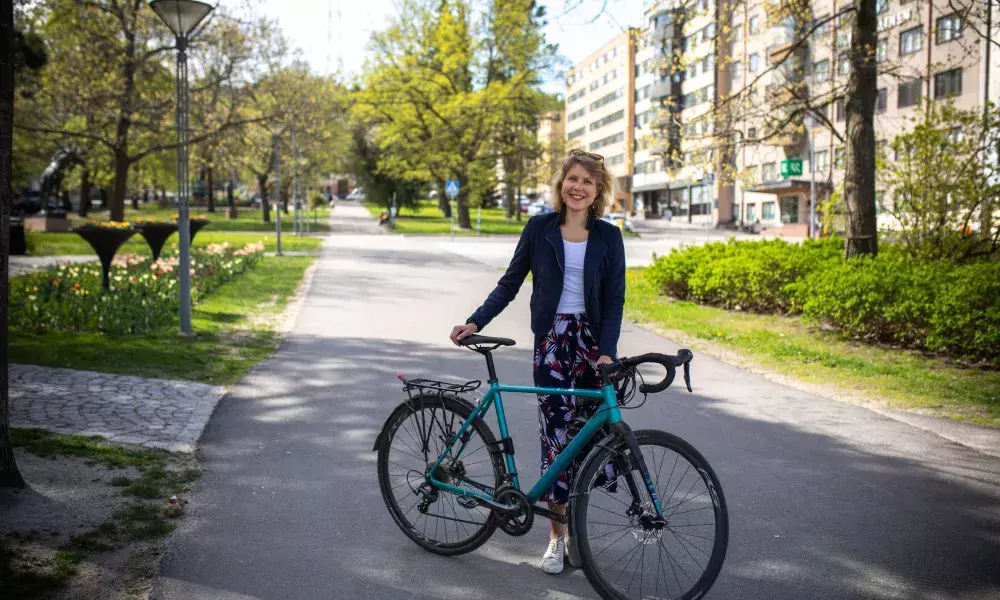How does CitiCap project promote sustainable mobility through citizen engagement?

We heard about CitiCap project quite a lot these past weeks. The project has gained a lot of attention all over the world, not only in Europe, but also in the US and Canada. How do you explain this wide-spread interest?
I think one thing is the novelty value – we are the first city in the world to pilot an application with the personal carbon trading (PCT) logic behind. In the sea of hundreds of applications, this is something new and for a good cause. The app makes it possible to involve citizens and positively encourage them for making a change in their mobility behaviour and I guess that is something interesting for all cities tackling similar problems. Another important aspect, in my opinion, is that we have brought the discussion about personal carbon trading as a policy tool back up on the table.
CitiCap tested and implemented the world’s first personal carbon trading program. How come? What is the genesis of this project?
Lahti has a long history of being active on raising awareness and implementing environmental solutions to take action against climate change but also engaging citizens in multiple ways. I think the radical idea of PCT is a good continuation for the constant innovative approach of Lahti addressing environmental challenges.
I think car dependency is one of the challenges that pushed the city to pilot the idea especially on the mobility sector. The strategic target of the city is that by 2030 more than 50% of all trips will be made using sustainable modes of transport. Lahti has a lot of potential for becoming a thriving cycling city, we just need better infrastructure (such as the CitiCAP bicycle highway) and change of attitudes, and finally behaviour and culture. The latter, of course, requires political decisions and investments.
The biggest achievement so far is a functioning application. It is rewarding, yet also very challenging, to develop such a complex system from scratch in such a short period of time. I can only be extremely proud of all our partners that have contributed to the development process. The pilot is currently running and therefore we do not have results about the possible changes in mobility behaviour among the app users. However, we have been able to collect and analyse data about how the COVID-19 lockdown affected the mobility of the app users.
How is CitiCap, a mobility project, embedded in the Bold Green Capital you developed in the past 2 years?
Lahti has an ambitious goal of becoming carbon neutral by 2025. What we do in CitiCAP, supports achieving the target. Besides the PCT pilot, we have developed within the project a sustainable urban mobility plan (SUMP) that implements Lahti’s strategic target of becoming a bold environmental city. It lists 13 different measures to promote sustainable urban mobility in Lahti during the next ten years.
When it comes to the PCT pilot, our aim is to share our learnings to as many cities as possible in order to encourage them to start developing similar pilots. We have already organized a couple of follower city workshops and a webinar during the EU Week of Regions and there is more to come. So far, the Finnish city of Tampere has started their development process and we are very excited to see what will come out of that.
In many EU cities, temporary changes related to urban mobility as a result of COVID-19 are now becoming more apparent and sometimes even permanent, with cities keeping streets car-free, widening cycling paths, teleworking changing mobility patterns… How do you see these changes happening in your city and how do you think they can affect your project?
In order to meet the EU’s emission reduction targets it is essential that cities make these COVID-19 related changes permanent. It is a lot about re-allocating the space between motorized transport, bicycles and pedestrians. The experts estimate that in the future, public transport and cycling will be the dominant modes of transport in cities and now, not later, is the time to start planning and implementing the necessary changes. We have also implemented some measures that we hope to become permanent. Furthermore, we have the target of implementing our quality cycling network by 2030.
Considering the current climate crisis, to what extent and how do you expect your project to contribute to the EU Green Deal?
Our PCT pilot opens the discussion of personal carbon trading as a part of the solution in delivering results for the European Green Deal. Of course, there is need for more research but also for critical evaluation of the feasibility of personal carbon trading on wider and up-scaled context. We need a mix of different policy tools to tackle the climate crisis and it will be interesting to follow up and take part in the discussion on whether personal carbon trading is one of these tools.
CitiCap, all over the globe:
- France TV Info, September 2020
- The Telegraph, August 2020
- BBC, February 2020
- and many more...
About this resource
The Urban Innovative Actions (UIA) is a European Union initiative that provided funding to urban areas across Europe to test new and unproven solutions to urban challenges. The initiative had a total ERDF budget of €372 million for 2014-2020.
Similar content




